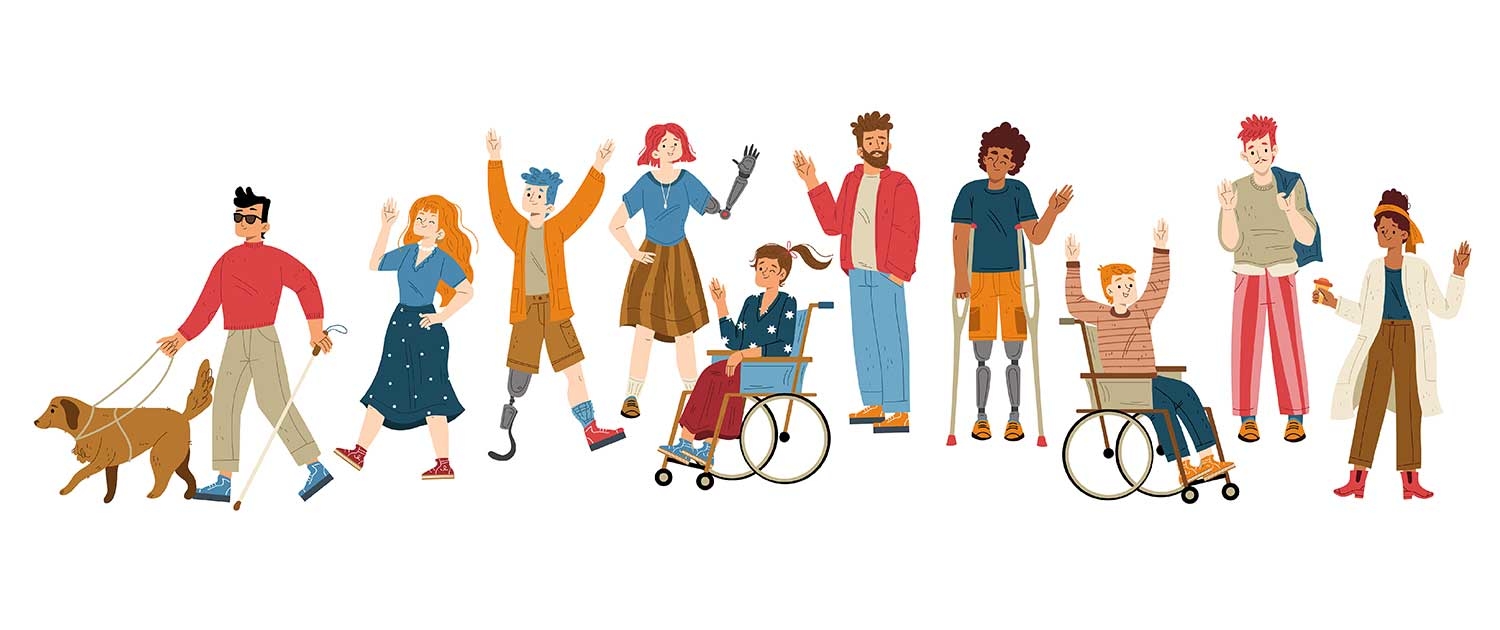Capitol Crawl
The eight-year-old girl crawled up the marble steps. There were some crawling behind her, there were dozens ahead of her. Crawling was more than she was supposed to be able to do; six years before, doctors had told her parents that cerebral palsy would prevent her from ever moving on her own, speaking, or even learning basic skills. Yet as the sun burned down, she kept climbing, pulling herself upward on hands and knees. At one point she declared, “I’ll take all night if I have to!”
Her name was Jennifer Keelan-Chaffins, and she climbed the steps of the U.S. Capitol with about 60 other activists on March 12, 1990. She had participated in her first protest at the age of six and was even arrested the year before at a protest in Montreal. Now she and her fellow activists were determined to climb the steps and push through the Americans with Disabilities Act or ADA.
Why the ADA?
By the late 1980’s, there was a growing consensus that a lack of legal protections for disabledAmericans was a major human rights issue. Disabled people not only experienced access difficulties in their daily lives, they could be discriminated against in hiring without any legal consequences. Their frustrations were captured by a sign attached to the back of one protester’s wheelchair: “I Can’t Even Get To The Back Of The Bus.”
Activists, the Bush Administration, and some members of Congress began to call for legislation that would be like a Civil Rights Act for disabled Americans.
Why the Capitol Crawl?
By September 1989, the Senate had passed the ADA, and things looked promising. It then stalled in the House Committee on Public Works and Transportation. Committee members were under pressure from business interests concerned about compliance costs. The bill couldn’t reach the floor for a vote, much less reach the President’s desk.
On March 12, over 1,000 disability activists and supporters marched to the front steps of the Capitol to protest. The leader of a Denver group called ADAPT (Americans Disabled for Accessible Public Transit) had a plan for an even more dramatic protest. Dozens of ADAPT members with canes and wheelchairs discarded them and began climbing the 83 stone steps, crawling slowly, but with determination. There were not only dozens of “crawlers,” but dozens of media cameras, many of them focused on young Jennifer. On the nightly news and in the next day’s newspapers, the sight of a child struggling for equal access had a profound effect.
The crawlers had an effect on Congress as well.
What happened next?
The Capitol Crawl goaded the committee into approving the bill. It passed the House with a
unanimous voice vote in May, and was signed by President Bush.
Among its provisions, the ADA:
- Required every facility open to the public (with a few exceptions) to be accessible to those in wheelchairs or with other mobility issues
- Outlawed discrimination in employment against disabled persons
- Required employers to make reasonable accommodations so that disabled employees can work safely, comfortably, and effectively.
- Required interpreters and other aids for the Deaf, Deaf-Blind, and hard of hearing
- Created programs to help fund these new requirements
Just as earlier legislation had ensured Americans of every color and ethnicity could fully participate in society, the ADA ensured no one would be left behind because of a difference in ability.
What effect does the ADA have on language services?
The ADA requires anyone providing public accommodations to ensure that those with a disability have full access to it. This includes providing American Sign Language (ASL) interpretation and other services for those who are Deaf, Deaf-Blind, or hard of hearing, and it applies to every organization, not just those above a certain size
Improvements in technology empower businesses and agencies to comply with these requirements more easily and quickly than ever before, or to choose the better option of in-person ASL interpreting. The best way to avoid liability—and truly serve your Deaf, Deaf-Blind, and hard of hearing customers, clients, constituents, or patients—is to get in touch with a local language company to explore your options and develop a plan.





